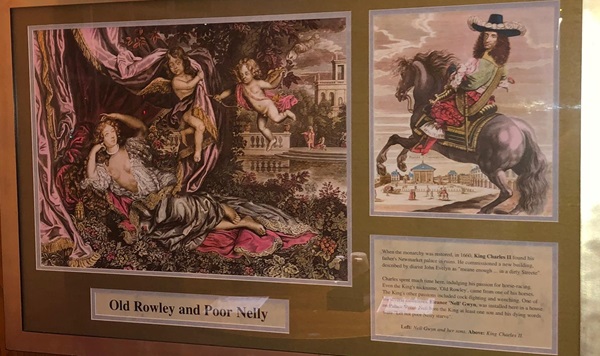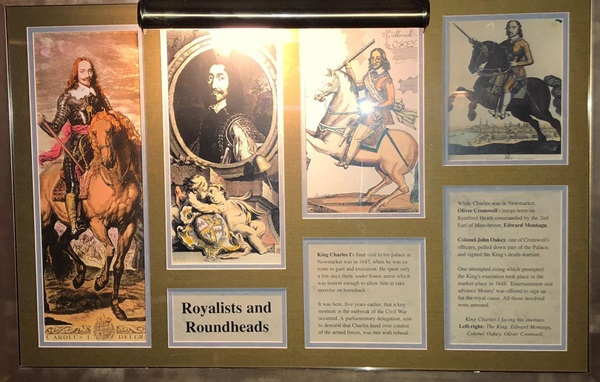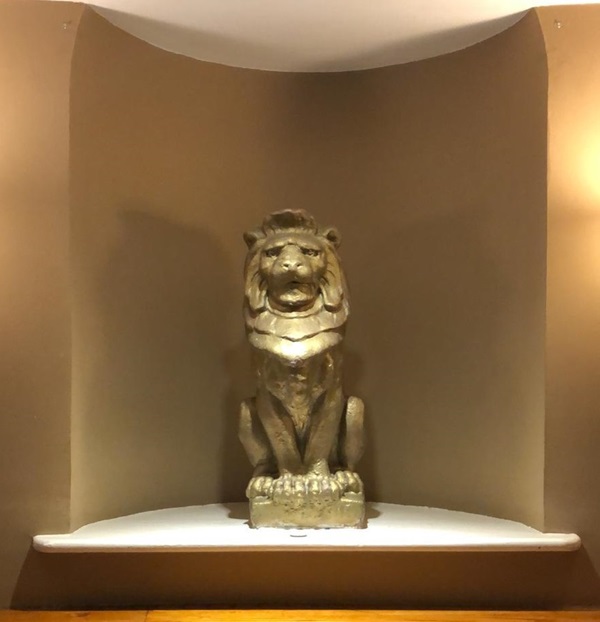44 High Street, Newmarket, Suffolk, CB8 8LB
This pub is the former Golden Lion, a long-standing fixture on High Street. The sign of The Golden Lion is thought to have originated with King Henry I. Known as the Lion of Justice, Henry started a royal menagerie at Woodstock, which included lions – reputedly the first to be seen in England.
Prints and text about The Golden Lion.

The text reads: Newmarket was created in the 13th century, from the parishes of Woodditton and Exning. From its earliest beginnings, many of the town’s residents worked supplying the needs of travellers using the old Icknield Way and the London to Norwich Road.
The High Street had many alehouses and inns. There are records of at least a dozen in 1500, including the Ram – now the Rutland Arms – immediately opposite this Wetherspoon pub. The Ram’s named was changed when the Manor of Newmarket passed to John Manners, Marquis of Granby, eldest son of the Duke of Rutland.
The Golden Lion pub has been a feature of the High Street since at least the late 18th century. The name refers to the coat of arms of either King henry I or the Percy family, Earls of Northumberland. The pub’s landlords and licensees during the 19th century included John Jones, Ralph Westley, and William Wise Wright.
Top: Tudor hospitality
Left and below left: Royal coat of arms
Right: Advertisement for The Golden Lion
Below right: High Street, 1890 (Golden Lion, centre).
Illustrations and text about King Charles II and Nell Gwyn.

The text reads: When to monarchy was restored, in 1660, King Charles II found his father’s Newmarket place in ruins. He commissioned a new building, described by diarist John Evelyn as “meane enough… in a dirty Streete”.
Charles spent much time here, indulging his passion for horse racing. Even the King’s nickname, ‘Old Rowley’, came from one of his horses. The King’s other passions included cock-fighting and wrenching. One of his several mistresses, Eleanor ‘Nell’ Gwyn, was installed here in a house on Palace Street. Nell bore the King at least one son and his dying words were “Let not poor Nelly starve”.
Left: Nell Gwyn and her sons
Above: King Charles II.
Prints and text about King Charles I and Royalists.

The text reads: King Charles I’s final visit to his palace at Newmarket was in 1647, when he was en route to gaol and execution. He spent only a few days there, under house arrest which was lenient enough to allow him to take exercise on horseback.
It was here, five years earlier, that a key moment in the outbreak of the Civil War occurred. A parliamentary delegation, sent to demand that Charles hand over control of the armed forces, was met with refusal.
While Charles was in Newmarket Oliver Cromwell’s troops were on Kentford Heath commanded by the 2nd Earl of Manchester, Edward Montagu.
Colonel John Oakey, one of the Cromwell’s officers, pulled down part of the palace, and signed the King’s death warrant.
One attempted rising which prompted the King’s execution took place in the market-place in 1648. ‘entertainment and advance Money’ was offered to sign up for the royal cause. All those involved were arrested.
King Charles I facing his enemies
Left- right: The King, Edward Montagu, Colonel Oakey, Oliver Cromwell.
A golden lion sculpture.

External photograph of the building – main entrance.

If you have information on the history of this pub, then we’d like you to share it with us. Please e-mail all information to: pubhistories@jdwetherspoon.co.uk